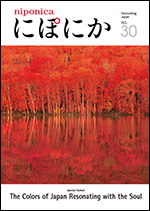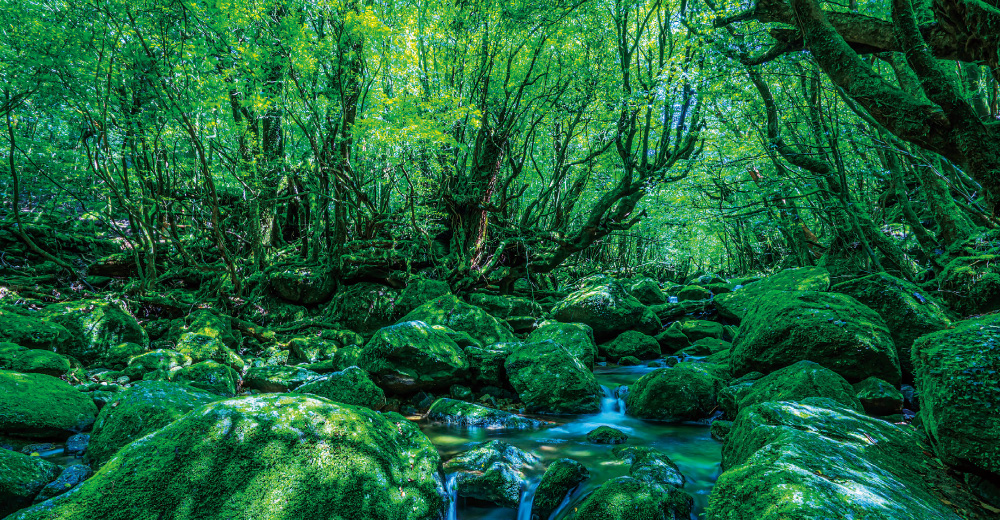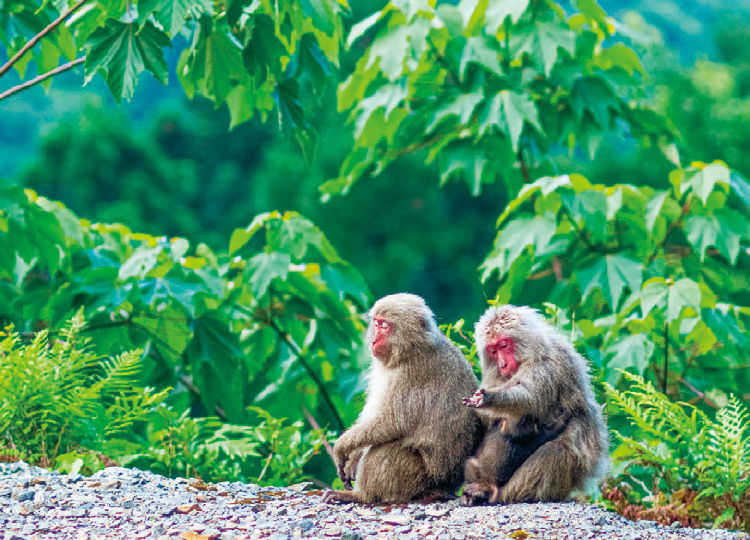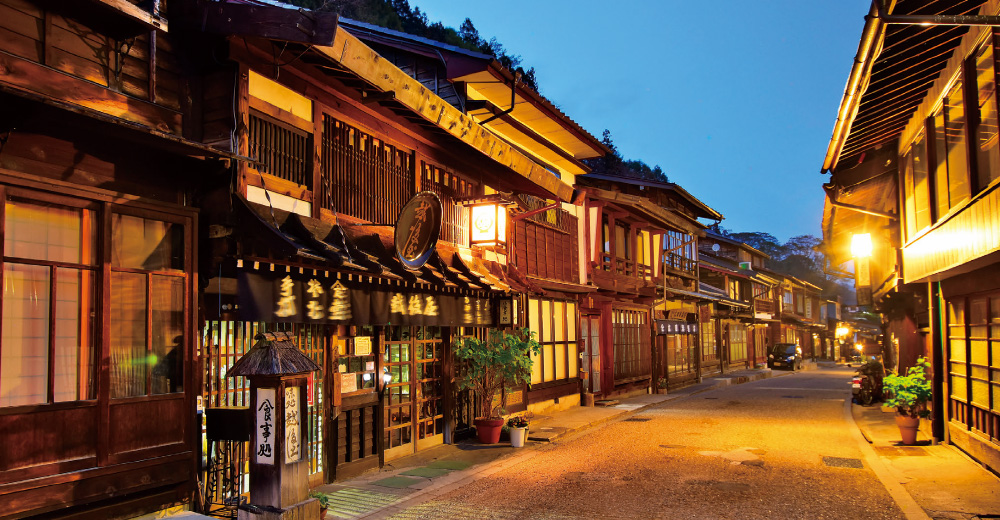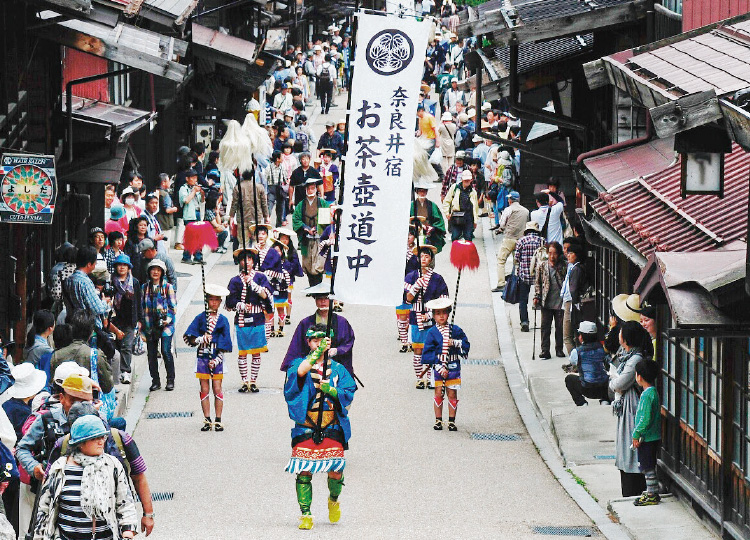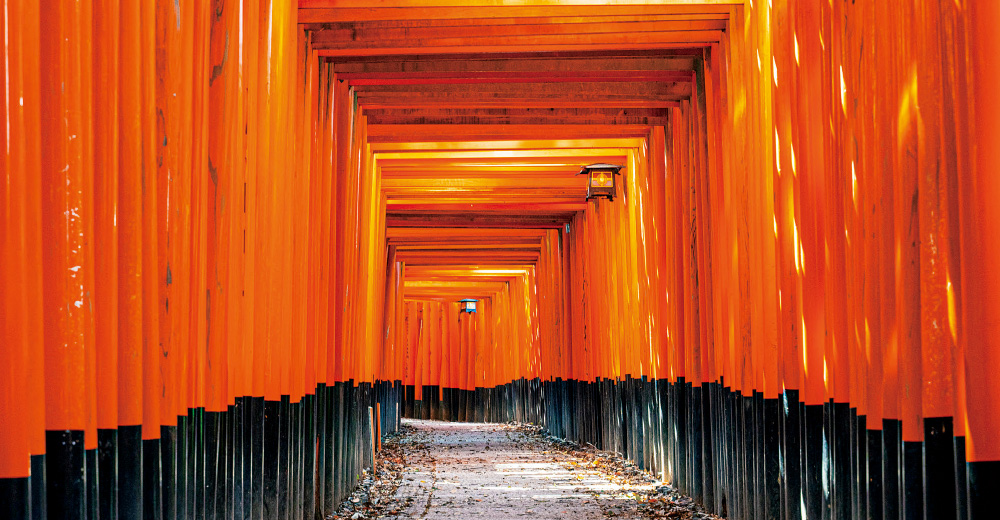
2021 NO.30
MenuThe Colors of Japan Resonating with the Soul

Colors in the Town
The beautifully-green Yakushima is known as a habitat to cedars indigenous to Japan.
On Yakushima, you can discover mystical, deep green forests covered with moss. As you reach the 500-meter elevation mark, Yakushima cedars (defined on the island as trees that are at least 1,000 years old) begin to intermittently appear. Of the confirmed Yakushima cedars, the famous Jomon cedar is said to be the oldest, estimated to be between 2,000 to 7,200 years old. Many indigenous animals inhabit this timeless green land, such as Yakushima monkeys.
The wood brown townscape brims with charm.
Lined with about 300 homes, Narai-juku is one of the longest post towns in Japan. In the Edo period (1603–1868), the town prospered with travelers coming and going on Nakasendo Road along the Narai River in Nagano Prefecture of central Japan. The townscape stretches for approximately one kilometer, with wood brown buildings of unique architecture that combine functionality and artistry, emanating a timeless and profound mood.
Fushimi Inari Shrine is an icon of Fushimi.
This town with Fushimi Inari Shrine, which is memorable for its bright vermilion torii gates that seem to extend to eternity, is also a famous sake district of Japan. Producing sake requires a great amount of water, and as a home to bountiful high-quality natural springs, Fushimi is the backdrop to many legends about water. When kanzukuri (cold brewing) is at its peak in the winter, the warm aroma from breweries steaming rice wafts through the town.

